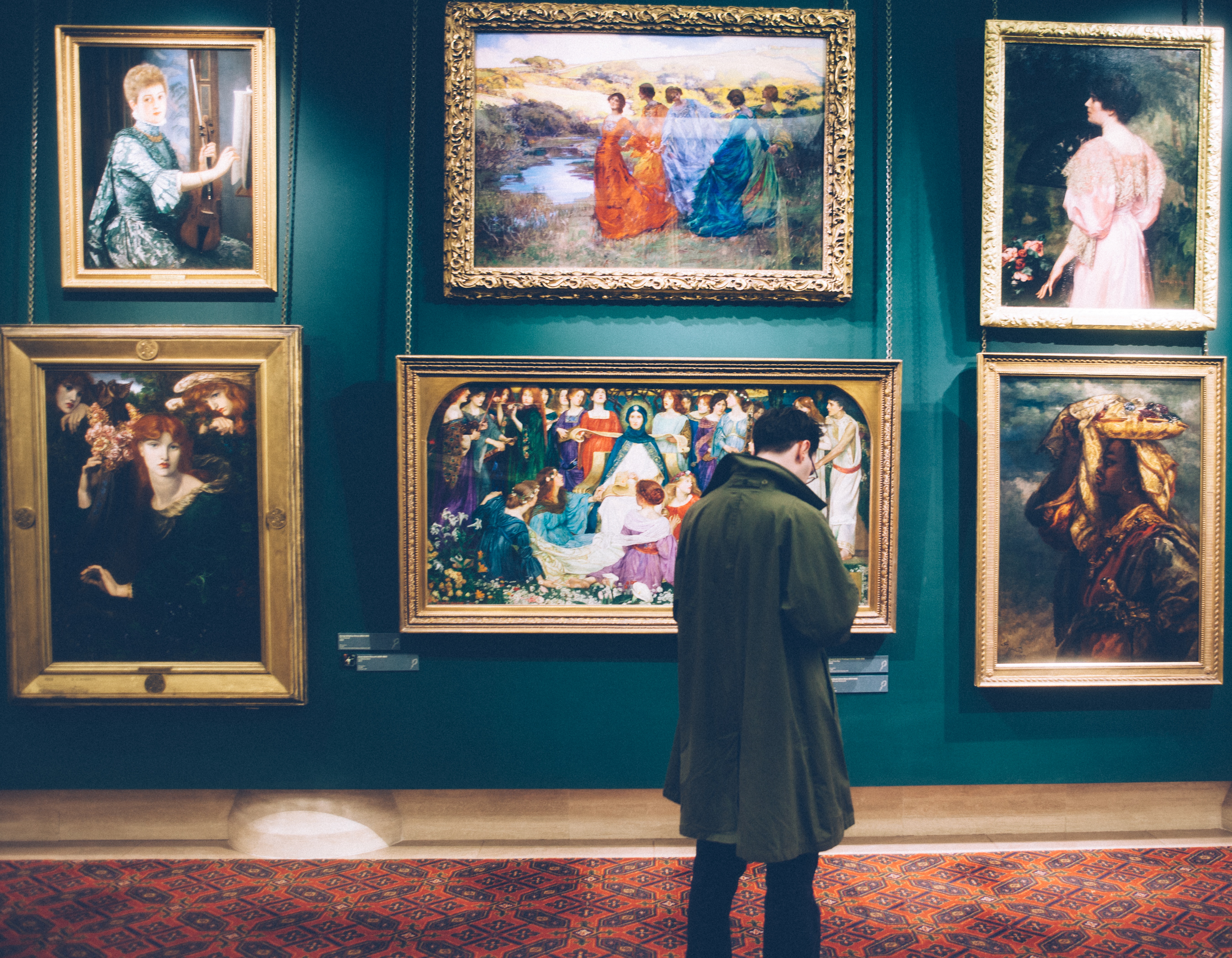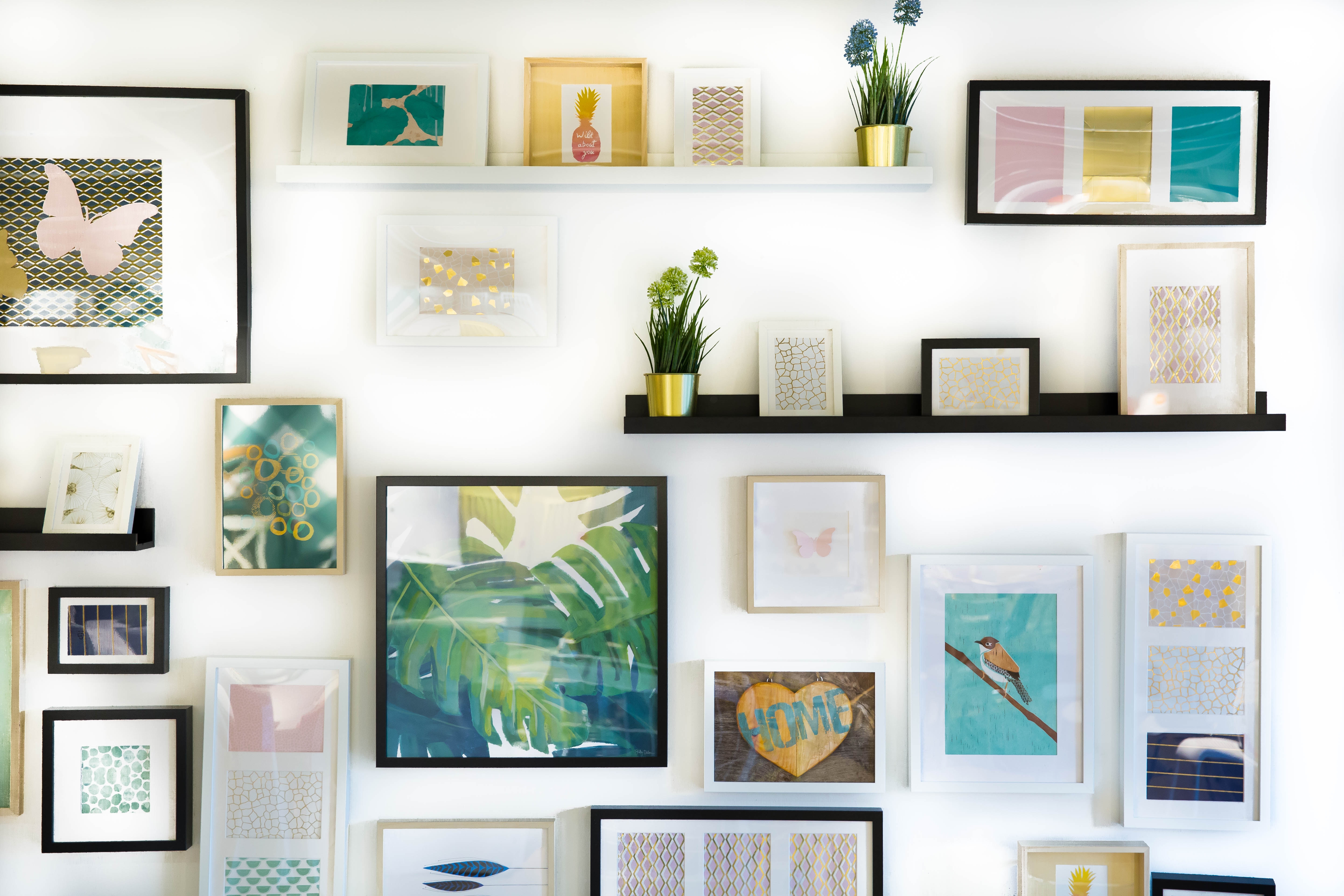Making Money as an Artist: Ways to Sell Your Prints
As an artist, it’s a dream come true to have your work hung on the walls of someone’s living room. How precious to find someone who can connects so deeply to your artwork they want to see it everyday.
But to go from your studio to their living room, you’ve got to know some business.
If you’re thinking about making a living off selling your prints or just looking for more eyeballs to put your prints in front of, here are a couple ways you can start selling your prints.
I’ve seen many artists quit their full time job when their works began to catch fire on Instagram. Instagram is more than just an app. It’s a powerful marketing platform that also:
- Allows you to meet and collaborate with amazing creatives
- Land dream gigs/commissions
- And form new friendships along the way
The first thing you need to do is to grow a niche fan base on the social media platform. Tell your story. Load your feed with your stunning artworks that clearly tell your branding, identity, and style. By posting your unique style, your content stands out and becomes easily recognizable.
Be consistent. Aim for posting 2-4 times a week without neglecting the quality of your posts. Instagram’s algorithm prioritizes content that captures comments and likes.
At the same time don't forget Instagram isn't a gallery. You’d do well posting outtakes, behind-the-scenes content, or even works in progress. Just make sure it’s visually interesting enough for your followers to engage with.
Once you’ve had your feed taken care of, engage with the Instagram community! Follow, comment, and support other artists you like or fit your style. You can really get your name out there if you do this consistently.
Then, after you get a solid audience, you can start selling your works there. Don’t forget to make your Instagram profile as business profile, so you can tag your works as “products", and people can shop directly through your Instagram Shop.
Exhibitions and Galleries

Photo by Clem Onojeghuo
Some pieces lose their charm if presented digitally. They demand traditional mediums. For these artworks, partner with a gallery or host an art show to exhibit them.
A lot of people like seeing an artwork in person before deciding to purchase. Some people also like meeting the artist to know more what’s behind the artwork and creating process. Galleries and exhibitions play a huge role here, bridging between artists and their customers and helping artists achieve their dreams.
Still, sometimes even the very best of talents go unrecognized. It can be a grind. And for most people, they’ve got to go small before they can go big. So contact galleries who represent work in line with your style to increase your chances of getting in.
PS. Note that some galleries take commission on sales, so you might want to price your works considering this factor as well.
E-Commerce and Boutique Online Stores

As artists, we don’t want to just sell our artwork as “stuff.” When people purchase our art, we hope they have a genuine connection with it—beyond mindless consumption.
Applying your submission to selective, boutique store that fits your art niche and target market will make your move in a subtle way.
Look for gift or lifestyle stores. Because these stores are curated, they’ll often have a strong core audience. Find a store who has a similar audience to yours before reaching out.
For example, one such store is Urban Outfitters. They are a lifestyle brand very popular with millennial to college-aged women. Street photographers who feature a lot of sharp colors probably won’t find much luck. But if you’re a landscape photographer who features a lot of washed colors, Urban Outfitters is right up your alley. Think about the audience.
To get in, try giving them your works on consignment or work out a wholesale pricing deal.
Print On Demand

Photo by Jonny Caspari
There are also websites which offer print-on-demand services. You won’t have to worry about customer service, creating a website, or printing, packing and shipping out prints.
You’ll probably still have to do some work marketing your new “store,” but other than that, all the legwork of selling prints is taken care of. You just upload your prints onto the store and you’re good to go.
For print-on-demand, there are two ways to go.
One is a more commoditized approach. Websites like redbubble, society6, or designbyhumans. These websites offer a large selection of products to choose from. You can have your art on canvas, metal, photographic prints, art prints, and more. These websites also offer products beyond wall art such as phone cases, tee shirts, mugs, stationeries, laptop sleeves...the selection is exhaustive.
Because these websites are more commoditized, the price points are lower. At the same time, there are also more people navigating these sites so you’re more likely to have a purchase.
Margins differ from website to website, so shop around to see which website gives you the best profit to work ratio.
Here’s a shortlist of some of the most popular:
- Redbubble.com
- Society6.com
- Designbyhumans.com
- fineartamerica.com
- Zazzle.com
- curioos.com
- Threadless.com
- Cafepress.com
The other approach is for more serious art collectors. There won’t be any mugs, phone cases, or tee shirts on these websites and the price point is much higher. Alongside your prints, you can also opt to sell your originals.
Some popular ones include:
Licensing your prints to print-on-demand sites can be great options for extra income and exposure to future collectors. Bear in mind if your artworks involves the faces of people such as a model, they would have to sign a release form before you can actually sell the works on there.
Your Own Website
And last but not least, your own website. A bit cumbersome if you're not technologically inclined but the rewards are well worth it.
Yes you have to create the website, design it, set up the content, and then everything else from inventory to customer service.
But here's the thing about having your own website...not only do you have the highest margins, you own the client list. This is huge because customers who are interested in your art can choose to receive updates from you. Now every time you come out new artworks or have a new show, you can let an email fly politely letting your interested patrons know what's up.
This does two things:
- Create recurring revenue.
- Staying on your patron's minds. By keeping in contact with them, they'll be more familiar with you and more intimate with your art. Which means they'll be more likely to check out your stuff on their own accord.
With all the tutorials out on YouTube, you might find creating your own website much easier than you thought.
Here are some popular options:
For ecommerce capabilities, these options all require monthly plans. If you don't want to shell out each month, try Weebly. You won't be able to access all their features on the free plan, but if you just want to test the waters, it is a good option.
Becoming a Creativepreneur
Growing your business as an artist is to learn how to be an creativepreneur. It’s important to have an open mind, stay inspired, and keep an eye of what other people are doing. This way, we’re aware of the market’s landscape, and we will know better on how to keep creating new works consistently which will result in loyal customers.
Written by Emily May
Emily May Gunawan from Sally & Emily photography duo was born in Sydney and raised in Jakarta, positioning her and her sister Sally to engage with both Western and Eastern worlds. Since establishing her career in 2012, they have gone on to work with global brands including Adidas, Tim Tam, to NYLON Magazine in a wide range of capacities both for print and digital publications as photographers, creative directors, to videographers. Sally & Emily’s images are fuelled by self-discovery and contemporary femininity, taking inspirations from their diverse cultural heritage and personal stories. View their works at www.sallyemily.com and follow the journey at www.instagram.com/sally_emily
Recent Posts
-
Exclusive Picture Frame Clearance Event!
Dear Valued Customer, We hope this email finds you well. At Mat Board Center, we're excited to …Aug 09 2023 -
Elements of Art—Color
7 elements of art. Each an essential tool in your art arsenal. We’ll be diving deep into each ele …Mar 11 2020 -
How to Sell Art on Etsy: A Step-By-Step Guide to Setting Up Your Store
Getting started selling your art? Etsy is a great place to get your feet wet. It’s:Easy to get start …Sep 26 2019

